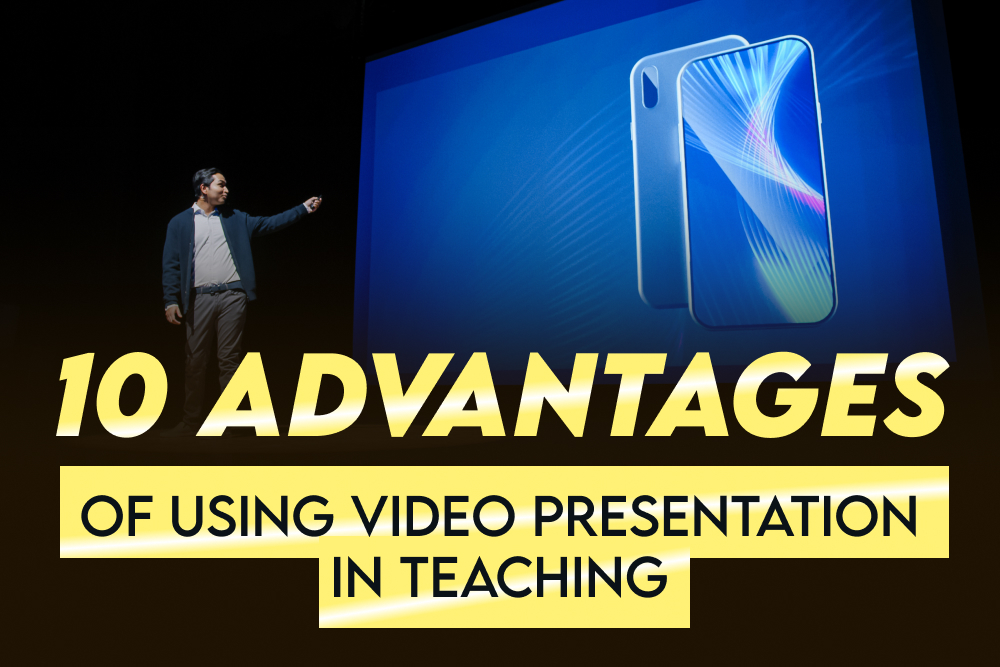10 Advantages of Using Video Presentation in Teaching
In today’s digital age, using videos in education has become increasingly important. It offers a wide range of benefits for both teachers and students. The advantages of using video in teaching help captivate and engage students fully in the classroom.
Moreover, videos have the power to enhance engagement, facilitate understanding, and provide multimodal learning experiences for students.
In this blog post, we will explore the 10 advantages of using video presentations in teaching. This article will shed light on the numerous benefits of using videos in the classroom.
Benefits of Using Video Presentations in Teaching
Teachers are always finding ways to improve learning and student engagement. And now that video content has been wildly popular online, integrating it into the classroom would be an amazing idea. With a projector rental and the right content, educators will enjoy the following perks:
1. Enhanced Engagement and Attention Retention
Enhanced engagement and attention retention among students is the main advantage of using video presentations in teaching. Traditional teaching methods often struggle to captivate students’ attention throughout a lesson. However, the use of videos in teaching boosts visual interest and presents information in an engaging manner.
Also, the combination of visuals, audio, and storytelling can capture students’ attention more effectively than textbooks alone. Because students gravitate toward moving images, videos provide an excellent medium for delivering educational content.
Aside from that, videos allow for dynamic content that stimulates multiple senses simultaneously. The movement on screen, sound effects, and narration all work together to create an immersive experience that captures learners’ attention.
2. Visual Learning Opportunities
Visual learners make up a significant portion of any classroom. With teaching strategies using videos, teachers can cater to these students’ needs more effectively.
It’s because videos provide visual learning opportunities that allow students to see concepts come to life. This makes abstract ideas more tangible and relatable.
For example, when teaching geography or history lessons, teachers can use videos featuring real-life footage or simulations. This transports students directly into different locations or time periods. Also, this visual immersion reinforces understanding and helps students connect theoretical knowledge with real-world context.
Lastly, visuals also help in creating mental images that aid in memory retention. When students can visualize concepts, they are more likely to remember and recall the information later.
3. Multimodal Learning Experiences
Every student has their own unique learning style, and videos offer a multimodal approach that caters to various preferences. By adding visuals, audio narration, text overlays, and other multimedia elements into video presentations, teachers can engage multiple senses simultaneously.
This multimodal approach provides a comprehensive learning experience that accommodates different learning styles. Visual learners benefit from the graphics and animations while auditory learners benefit from the narration.
On the other hand, kinesthetic learners can engage by following along with the actions demonstrated in the video.
By engaging multiple senses at once, videos facilitate deeper understanding and enhance overall comprehension of the subject matter.
4. Improved Information Delivery
Videos offer a dynamic way of delivering information that is often more effective than reading assignments alone. With videos, teachers can use a combination of visuals, animations, and voiceovers to explain complex concepts more effectively. This allows students to absorb information more efficiently and retain it for longer periods.
Also, the visual nature of videos makes it easier to understand abstract or complex topics. These topics might be challenging to grasp through text alone. In addition, seeing concepts visually helps students make connections between different pieces of information, leading to better comprehension.
Moreover, videos enable teachers to present information in a sequential manner with clear explanations and examples. This structured format aids in breaking down complex topics into bite-sized pieces that are easier for students to digest.
5. Accessible and Inclusive Teaching Method
Another importance of videos in teaching is the accessibility they provide. Teachers can caption and translate videos into multiple languages to make them accessible to students with hearing impairments.
Additionally, videos can accommodate different learning speeds as students can pause, rewind, or rewatch sections at their own pace. This inclusivity ensures that all students have equal access to educational content.
Accessible videos also benefit students who require additional support due to learning disabilities or other challenges. The combination of visual cues and auditory narration provides alternative means of understanding content beyond traditional reading-based methods.
Furthermore, students can access videos anytime and anywhere with an internet connection. This flexibility eliminates barriers related to physical location or time constraints, allowing students to learn at their own convenience.
6. Encourages Active Participation and Discussion
Videos offer an excellent platform for promoting active participation and classroom discussions. After watching a video presentation, teachers can facilitate meaningful discussions by asking thought-provoking questions related to the content.
Also, students can share their interpretations and engage in debates with their classmates. This interactive approach fosters critical thinking skills and encourages collaboration among peers.
Moreover, videos can serve as a springboard for lively discussions. It allows teachers to present different perspectives or controversial topics that spark students’ interest. Overall, it will help create an emotional connection, prompting students to express their opinions and engage in deeper analysis.
In addition to discussions, teachers can use videos as a basis for group activities or projects. In this setup, students can work together to create their own presentations or responses inspired by the video content. This collaborative approach enhances teamwork skills while reinforcing the concepts learned.
7. Facilitates Concept Visualization
Some subjects or topics may be challenging for students to grasp solely through textual explanations or static images. However, videos make it possible to visualize complex concepts more effectively.
This is possible by using animations, simulations, or virtual reality experiences in video presentations. Through this, teachers can help students develop a deeper understanding of abstract ideas that might otherwise be difficult to comprehend.
For instance, in science classes, teachers can use videos to depict scientific experiments that they can’t do inside the classroom. This clear representation of theories and their application enhances students’ comprehension
Also, videos also enable teachers to present spatial or temporal information more effectively. Some examples include explaining the movement of planets in astronomy or demonstrating historical events. In this case, videos can visually illustrate these concepts, making them easier to understand and remember.
8. Helps in Understanding Complex Topics
Certain topics require more than just words on a page to fully understand them. In this case, videos enable teachers to break down complex topics into more manageable segments. This way, teachers can present ideas in a visually engaging manner.
For example, when teaching scientific experiments or historical events, videos allow students to witness these processes unfold before their eyes. This immersive experience aids in better comprehension and retention of the subject matter.
9. Offers Flexibility in Time and Location
One significant advantage of using video presentations in teaching is the flexibility it provides in terms of time and location. Students can access video lessons at their convenience, whether they are studying from home or on the go.
Also, this asynchronous learning method allows for personalized schedules and self-paced learning. It can accommodate students’ different lifestyles and commitments.
In addition, students can access videos repeatedly, allowing them to revisit concepts whenever they need clarification or reinforcement. This flexibility empowers students to take ownership of their learning journey and provides opportunities for continuous improvement.
10. Enhances Creativity and Critical Thinking Skills
Lastly, adding videos to teaching fosters creativity and critical thinking skills among students. Videos often present information in a story-like format that encourages students to think critically, analyze situations, and draw conclusions. This approach stimulates imagination and helps students develop problem-solving abilities that extend beyond the subject matter teachers taught.
Also, videos can inspire students to approach problems from different angles, considering multiple perspectives or solutions. By engaging with compelling video content, teachers can encourage students to think creatively and challenge conventional ideas. It nurtures their curiosity and enhances their ability to solve real-world problems.
Moreover, creating videos as part of a project-based assignment allows students to showcase their creativity. It’s also an area where they can apply their understanding of the topic in a practical way. This hands-on approach encourages independent thinking, decision-making, and problem-solving skills.
Conclusion
The advantages of using video presentations in teaching are substantial. From enhanced engagement and attention retention to fostering creativity skills, videos are indeed a versatile tool for educators.
Teachers who utilize video presentations in their lessons empower their students with engaging content while catering to various learning preferences.
Also, students benefit from increased comprehension and better retention of information. It also encourages active participation in discussions and flexible access to educational resources.
So why wait? Start using video presentations in your educational practices today! If you don’t have the equipment yet, you can contact an AV production company to help. They can provide projectors, screens, and other displays to let you maximize the power of videos in the classroom.
Your classroom will come alive with excitement and your students will thrive with a deeper understanding of the subject matter. Happy teaching!


